Entrance door slopes
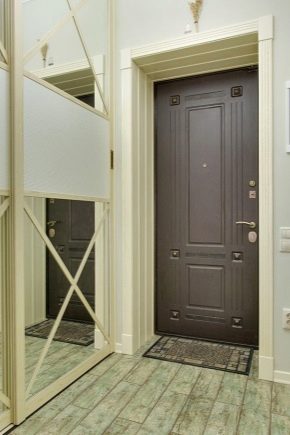
An entrance door forms the first impression of a home, so it must be both reliable and aesthetically pleasing and perfectly assembled. At the same time, the complete installation cycle includes stages that are often neglected out of ignorance. These include finishing the slopes of the entrance door, which is necessary not only for the beauty of the structure, but also for high-quality operation for a long time.
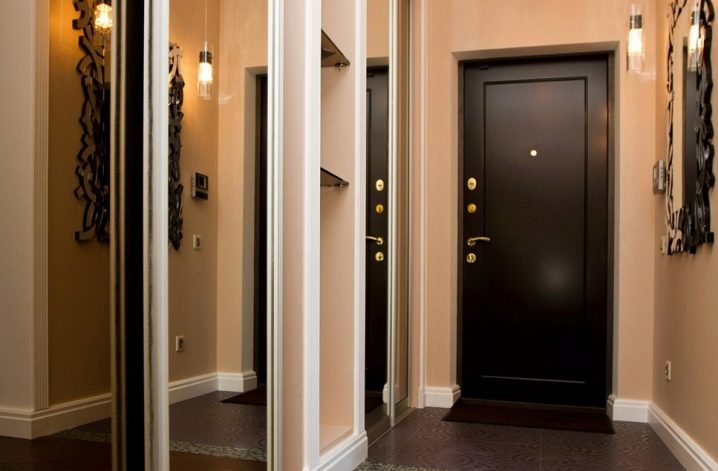
What it is?
As practice shows, slopes are often confused with platbands, since platbands are their external, decorative part. By themselves, they carry only an aesthetic function. But the slopes are involved in ensuring tightness, sound insulation and thermal insulation, increase the resistance of the front door to burglary.
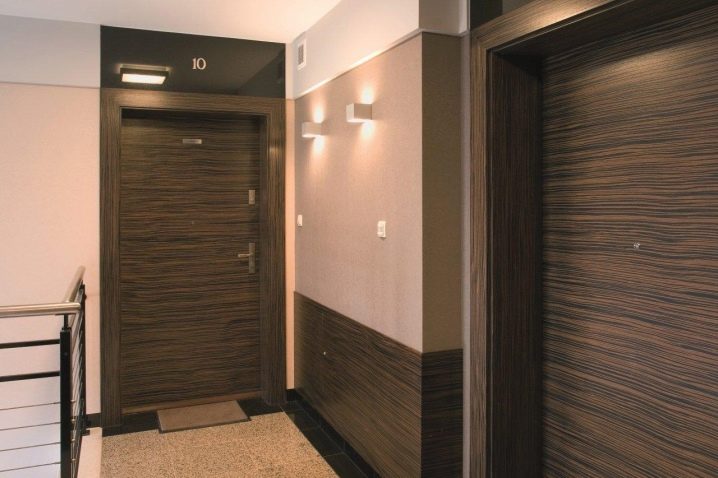
By definition, slopes are the inner and outer parts of the wall that "surround" the door frame. Slopes are also considered to be the left, right and top sides of a doorway in which a door is assumed but not installed. Not all types of doorways have slopes on both sides. Sometimes they may be absent from the outside, but from the inside they are in most cases.

The device of the door slope is quite complicated. High-quality slopes are not just parts of the wall that protrude beyond the frame, they are an optimal combination of materials, each of which is necessary to perform a separate function. Materials are applied according to the "puff cake" principle.
The first layer is rough. To create it are used:
- Primer. It is applied to the cleaned wall surface as a pre-finish coating. Primers are necessary to level the absorbency of the surface, as well as to improve the "adhesion" of the following materials to it.
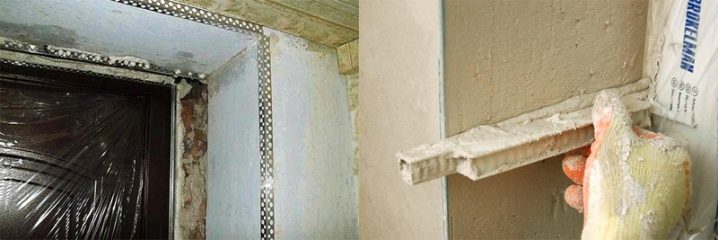
- Styrofoam. This layer is optional, but desirable in cases where the wall needs to be insulated. This is true for apartments on the lower floors and private houses.

- Plaster. The primer improves the adhesion of materials to the wall, but does not level the surface. Plastering is necessary to fill irregularities, depressions or cracks in the wall. This process is the most laborious and time consuming and requires certain skills and abilities.
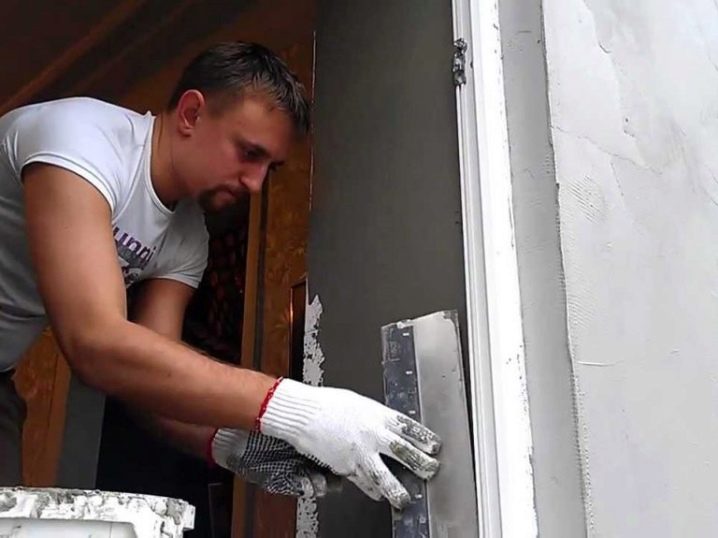
Alternatively, you can use a material that is easier to use - drywall. This option allows you to quickly prepare the surface for further types of finishes, but it is not suitable in all cases. In the conditions of the Russian climate, it is more often used for interior decoration or in warm regions with high humidity.
- Reinforcing corners... These thin but strong metal corners are essential to protect the plaster at the corners of the slopes. The front door is a place with high traffic, and the corners of the opening often touch, hit, and scratch. Without proper protection, plastered corners will quickly begin to crumble and lose their presentable appearance.
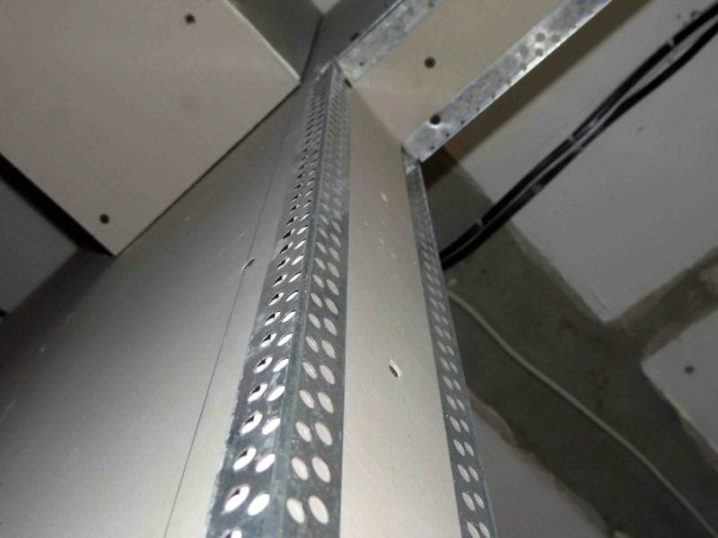
- Putty. With its help, all the shortcomings are leveled after installing the corners. Putty compounds lay in an uneven layer, therefore, after they dry, the surfaces of the slopes must be cleaned. For this purpose, fine-grained sheets of sandpaper or low power grinders are used. Furniture is also suitable if it reaches hard-to-reach places.
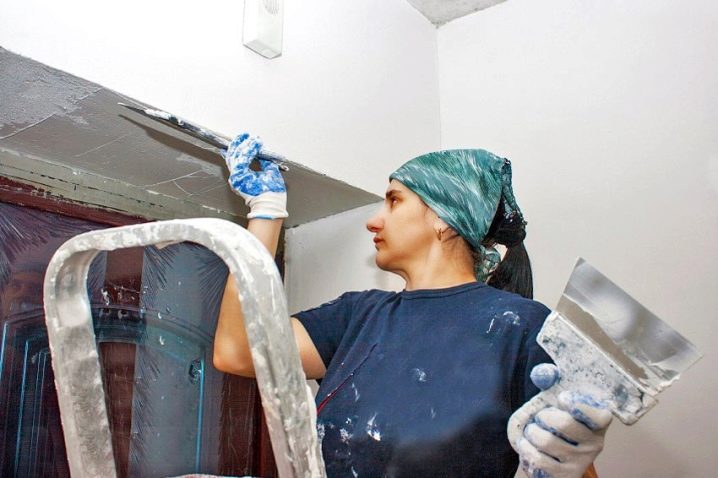
- Re-primer before applying a decorative coating.
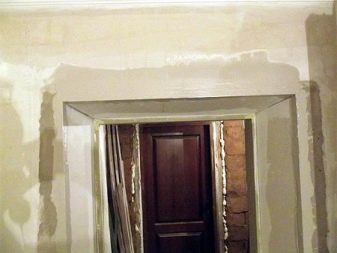
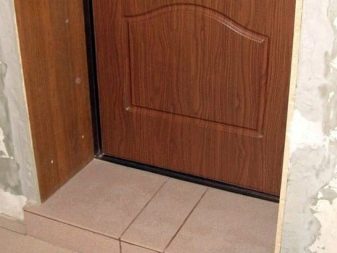
The second layer is finishing, or front. There are no strict rules for choosing finishing options.It depends only on individual preferences and financial capabilities. The only condition that must be met is to choose a finish that is in harmony with the door leaf and wall decoration.

How to decorate the interior of the apartment?
Slopes protrude from both the outer and inner sides of the door. Accordingly, there are two types of finishes - external and internal. External, as a rule, is less variable. The main focus is on the design of the door leaf, and the slopes echo either with it or with the decoration of the walls. More often than not, these are practical and concise options that do not attract attention.
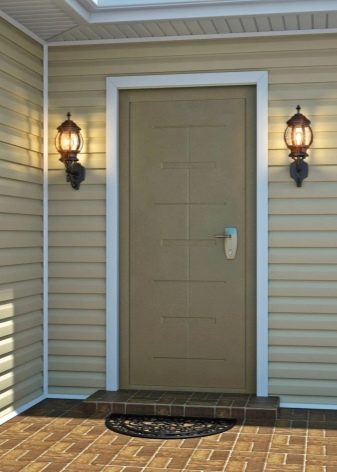
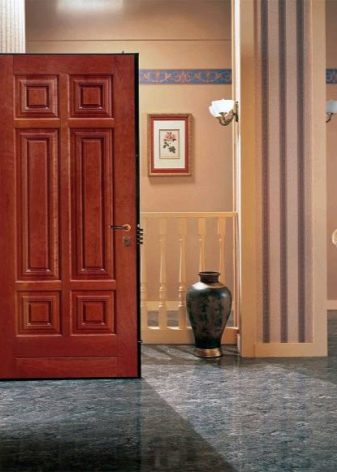
Inside an apartment or house, the decoration of the slopes becomes part of the interior. She is assigned a decorative role, so the types of materials and methods of decoration are of great importance.
Finishing with facing materials from the inside is of the following types:
- Plastering the surface.
- Bonding of finishing materials.
- Frame cladding.
- Coloring.
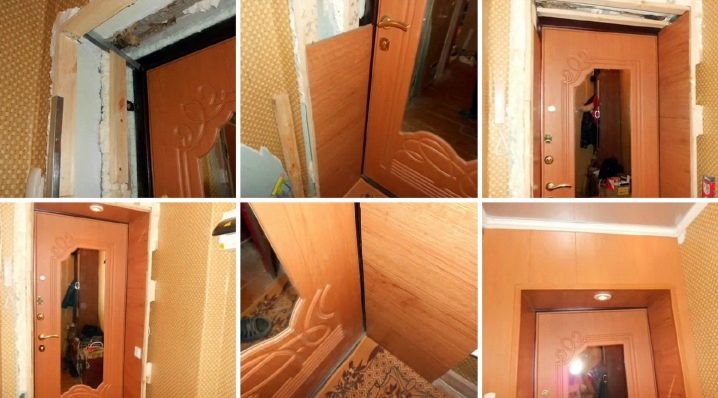
For the first type, plaster, primer, water and all the necessary tools are used. This process takes a lot of time, but it makes it possible to putty all the irregularities, insulate the structure, and make a layer of the required thickness. Decor made from other materials is often applied over the plaster, but in itself it is already considered a finished finish, therefore it belongs to the basic techniques in repair.
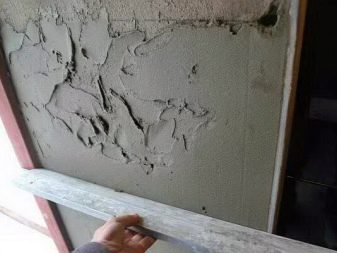

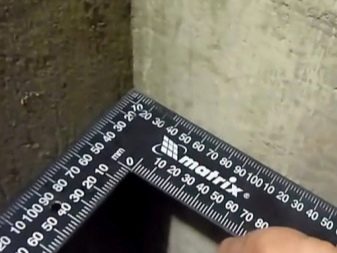
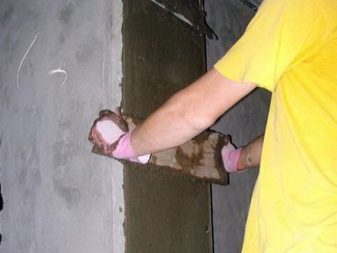
After plastering, "clean" slopes can be easily painted in any suitable color, while they are sanded to smoothness or, on the contrary, are left embossed.
The following materials can be used for decoration:
- Ceramic tiles (tiles). Differs in rigidity, moisture resistance, hygiene, low price and a wide range of colors, shapes and textures. It is easy to care for the ceramic surface, however, the tile can crack or chip off if it is mechanically damaged, and during the replacement process you will have to work a lot so as not to damage the neighboring elements.
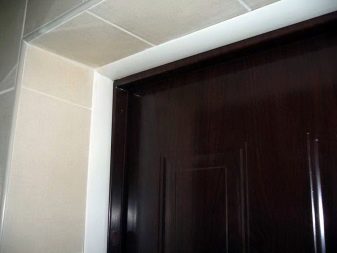
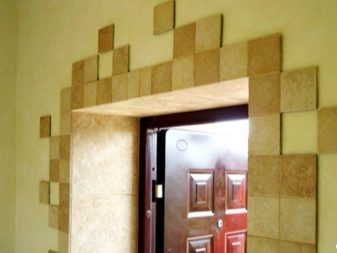
The indisputable advantage of tiles is the many design possibilities. The mosaic looks especially original. It can be made from small solid tiles or from small pieces. Fragments of a mosaic are artificially obtained from tiles, cutting them into pieces of the desired size, and handymen can use broken tiles for this purpose, which are considered unsuitable. The result is original and unique, and the cost of materials is minimal.
Any construction adhesive is suitable for gluing tiles. It is applied evenly with a plastic spatula, and the seams are rubbed in a day with a rubber spatula.
- Porcelain stoneware. This material is often confused with ceramic tiles. Indeed, in the manufacture of porcelain stoneware, the same substance composition is used as for tiles, but the production technology is very different. As a result, the tile has a colored coating only on top and becomes ugly when chipped, and porcelain stoneware has a uniform color throughout the entire thickness of the slab and damage on it is less noticeable. Also, its structure is denser, so it is more resistant to damage. In addition to being moisture resistant, environmentally friendly and durable, it also has frost resistance. In appearance, this material is more noble, but the color spectrum is very limited and its cost is higher than for ceramic tiles.
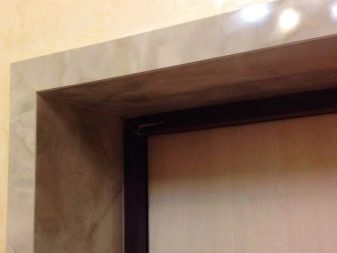
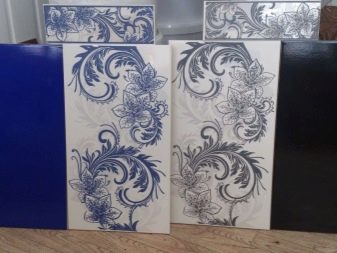
- Decorative rock. It is truly an interior decoration, although it is far from always appropriate and is expensive. The peculiarity of this material is that it can be used to simulate real masonry. It has an attractive appearance, gives a zest to the interior, and is impeccable in terms of performance. The stone does not prick, it is easy to clean, it belongs to durable and safe materials. To fix it on the surface of the slopes, construction glue is used, but there are also ways to "sheathe" the surface with decorative stone.
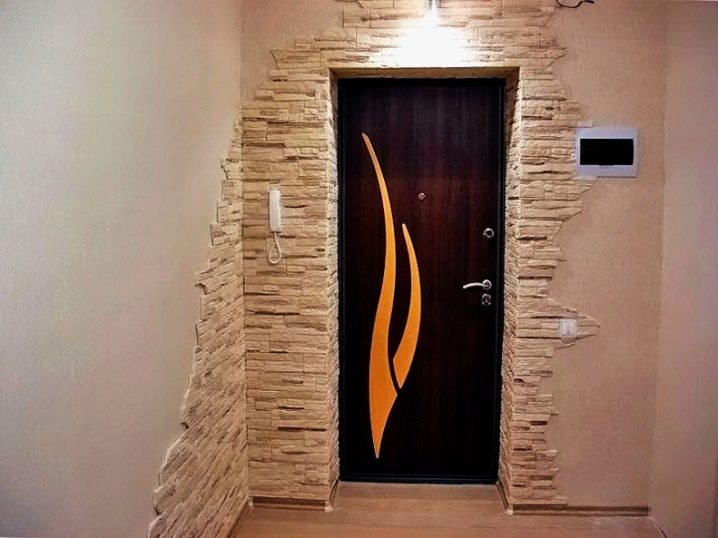
- Wallpaper. Wallpapering is perhaps the easiest and most affordable way to decorate. It is most convenient to stick wallpaper on slopes with plasterboard trim. The glue will "grab" and on the plaster, but the surface for this will have to be leveled especially carefully so that "bubbles" do not form on the wallpaper.
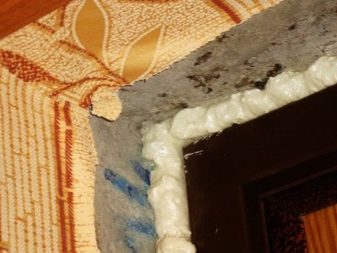

Given the high traffic at the entrance to the room, it is better to choose wallpaper washable and in dark colors.
Sheathed openings using the following materials:
- MDF... Fine particle size panels are very popular in all types of finishes. They are universal for any interiors, look aesthetically pleasing and have a number of advantages: durability, a variety of coatings that imitate different types of wood, ease of installation, improved sound insulation and thermal insulation in the room.
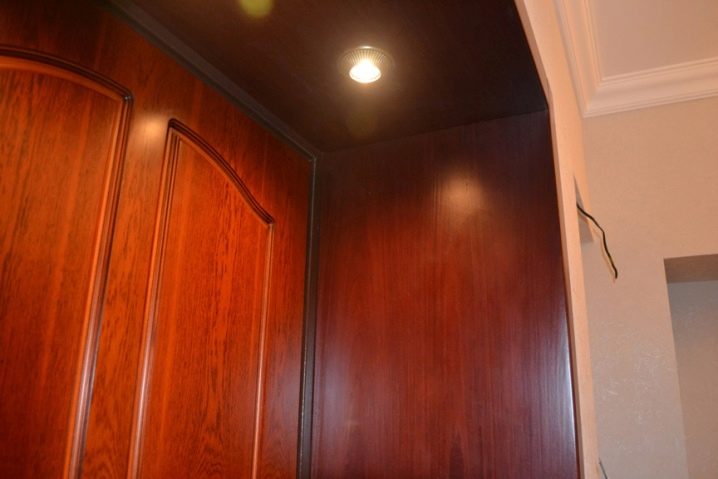
- Chipboard... Chipboard finishing is the easiest way to tidy up a part of the doorway if, after installing the door, it looks poor. In this case, you don't even need a primer and putty. It is enough to sheathe the surface with flat sheets that match the tone and pattern to the door leaf.
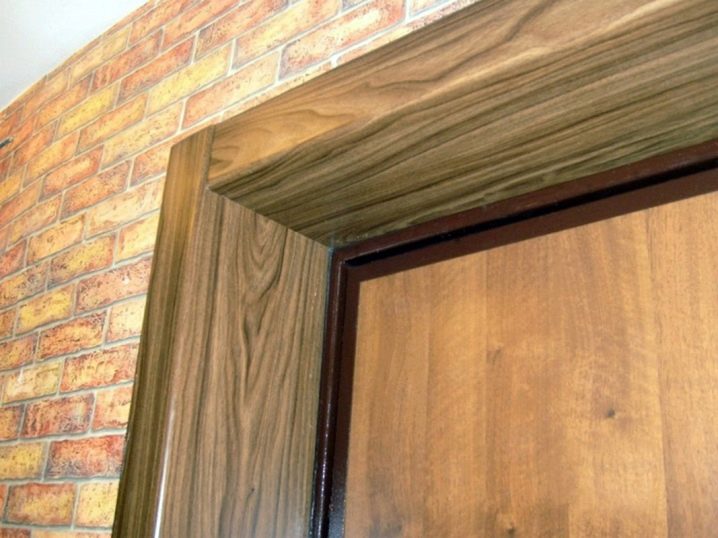
- Laminate. Laminate cladding is widespread for two reasons: it is inexpensive and looks much more solid than non-laminated recycled wood materials. The basis of the coating is fiberboard or chipboard (therefore "to sew up the slopes of chipboard" means the same as a laminate), and on top it is decorated with a polymer film. The most common option is stylization for valuable wood species, but there are also other shades in a dark and light palette. It has a number of advantages inherent in all wood-based materials, as well as certain disadvantages. So, among the most common disadvantages are hydrophobia (the material can stratify and swell from water) and average wear resistance.
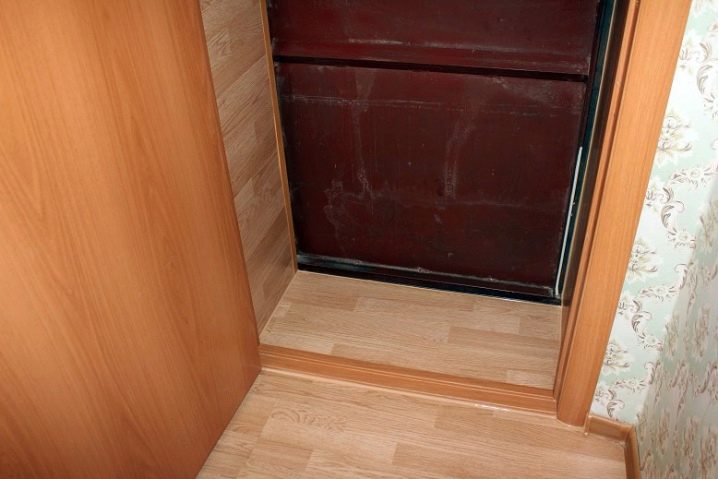
- Dobory... Sheathing of internal slopes made of extrusion is rather a necessity than an element of decor. Dobors are narrow plates made of different materials, which are necessary for masking slopes, the width of which is more than 7 cm. As a rule, they are used when the door and the slopes must be sheathed in the same style and with the same materials.
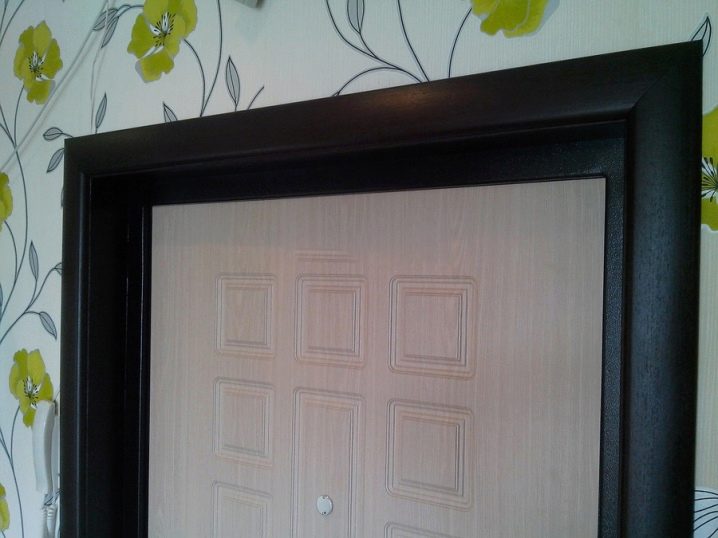
- Drywall. The choice of drywall is relevant when you need a high-quality and budget result, with which it is convenient to work with your own hands. In addition, plasterboard perfectly levels the surface for decorative finishing in the future and enhances the insulating properties of the entrance door.
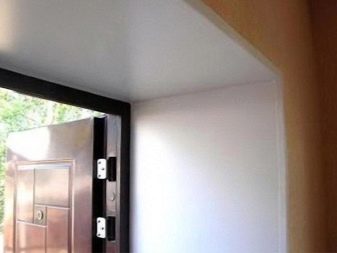
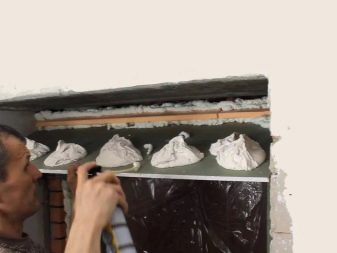
- Plastic... No matter how versatile MDF, laminate and similar materials are, a plastic door requires the decoration of the adjacent space with PVC-based materials. The use of sandwich panels is especially popular. They have a variable width - from 5 to 150 cm, which allows covering each side of the slope with just one piece.
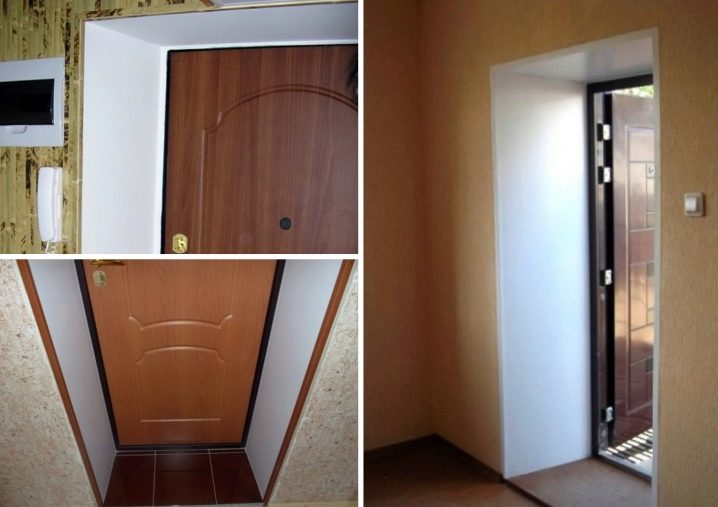
The performance characteristics of the product are also at their best: aesthetic appearance that lasts for a long time, biostability, resistance to humidity and temperature extremes, the presence of air sections inside the panels, which ensure the preservation of heat in the house, and hygiene.
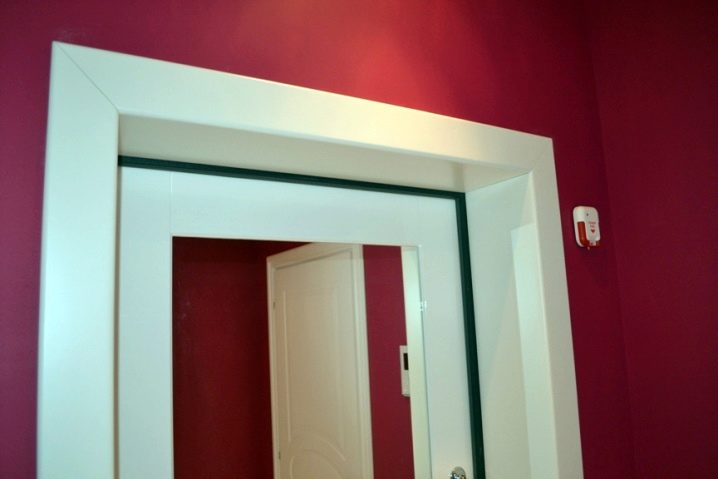
Modern technologies for the manufacture of plastic guarantee its environmental safety and non-toxicity.
- Siding... The characteristics of siding panels are very diverse, because they are made from various materials - from aluminum to plastic. The slopes are finished with aluminum, copper, wood, basement and vinyl siding.
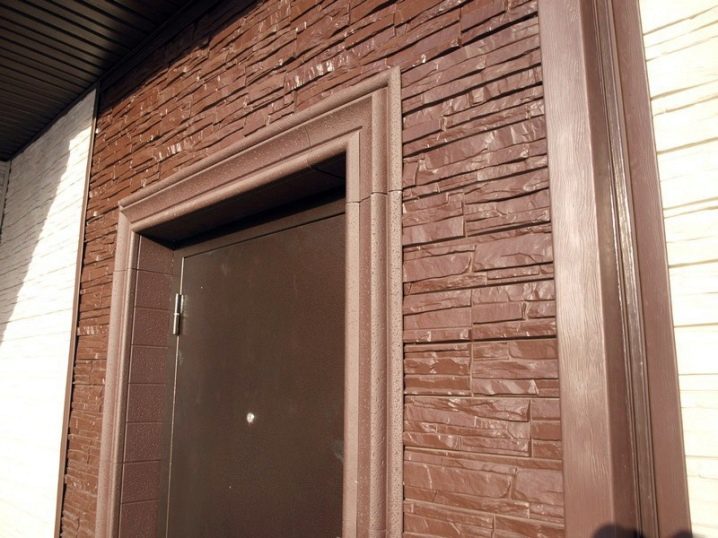
The best option is vinyl. It is a monolithic PVC panel, the main feature of which is flexibility. It can be given absolutely any shape, ideally fit into corners without joints and gaps. Vinyl is not subject to the processes of decay and combustion, is not afraid of water, does not crack at temperature extremes, is easily cleaned of dirt, is not of interest to fungi and insects. The front side of the panels can be plain, with a pattern, stylized as stone, wood or brick.

Frame cladding implies the preliminary installation of a metal (aluminum) or wooden profile along the perimeter of the doorway, to which any material is subsequently attached using self-tapping screws. This method is considered the most time consuming, since before fixing the profile, it is necessary to prime and level the slopes with cement mortar.
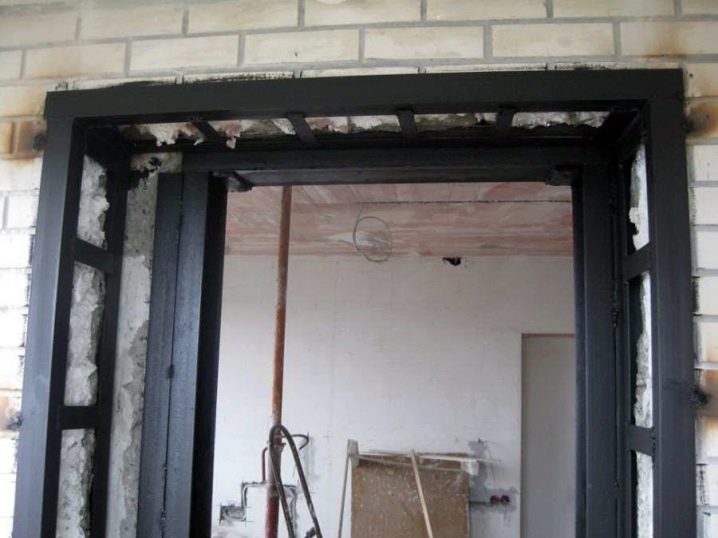
Some types of materials (plaster, chipboard, MDF and drywall without decorative coating) need to be painted to blend harmoniously with the interior of the room.
For these purposes, the following are used:
- Acrylic paints. It is convenient to add them to the composition for surface plastering. This simultaneously reduces the number of finishing steps, since surface leveling and painting occur simultaneously, and makes damage less noticeable, since the entire layer of plaster is painted over;
- Water-based... These paints can be added to plaster or painted over the wall over the leveling layer. When using acrylic and water-based paints, it is important to remember that they must be primed on top, otherwise the surface will get dirty. You can dilute the primer yourself from PVA and water in a ratio of 1: 5;
- Latex based paints can also be used in two ways, but their advantage is that no final primer is needed. Latex compounds are non-hydrophobic and easy to clean;
- Alkyd and oil. These compounds are indispensable in high humidity conditions. They are more durable and dense, but they are more difficult to work with due to their thick consistency and toxic odor.
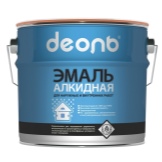

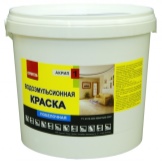
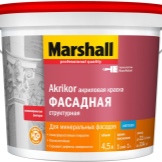
How to insulate?
Thermal insulation and soundproofing are functions of the entrance door, which in part depend on the type of finishing of the slopes. To insulate a room, you don't have to run to the store for a heater. First you need to take care of maximum tightness, and you should start with the front door. This will not only increase the level of comfort in the house, but also help in the long run to save finances on utility bills.
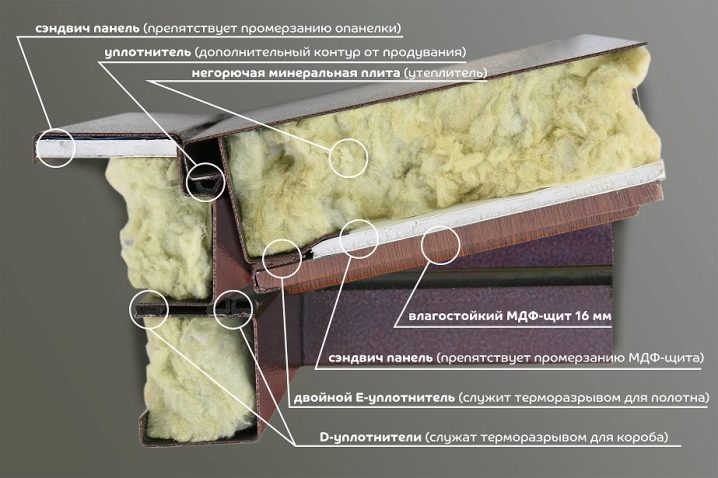
Insulation of slopes from the inside is carried out step by step:
- Selection of materials. Leading positions are occupied by sandwich panels, drywall, foam plastic, mineral wool, polystyrene. Experts recommend choosing exactly polystyrene, which is superior to other materials in many respects. At a relatively low cost, it is capable of thermoforming and vacuum forming, is resistant to moisture and chemical processing, does not smell, is environmentally friendly, and lends itself to various types of processing. If there is no polystyrene, it can be replaced with a mineral board (wool).

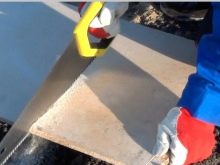

- Preparatory work. They include all measures for cleaning the work surface. It is necessary to cut off the polyurethane foam, remove the old coating, if any, eliminate irregularities as much as possible. After removing the old plaster, the surface must be dust-free with a vacuum cleaner and a damp sponge.
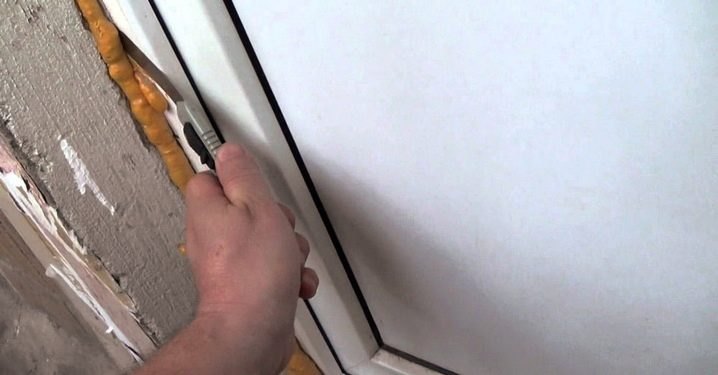
- Primer and putty. It is imperative to prime the surface of the slopes. This will ensure high-quality adhesion of subsequent layers to the wall, and also minimize the likelihood of the appearance of fungi and bacteria on the wall. Any deep action soil is suitable for this purpose. After applying it, the surface must be allowed to dry for 3-4 hours. Re-applying the primer to the plaster is permissible.

It is not necessary to putty the slopes, but it is desirable, especially if the surface has many defects, chips and depressions. All these small gaps greatly affect the insulating qualities of the front door.
- Insulation installation. At this stage, it is the turn of the insulation material. Polystyrene boards and mineral wool are glued with specialized adhesives. The glue is applied with a spatula to the plate, then it is applied to the surface of the slope and adjusted to the level. Drying time of the glue - at least a day. After that, the plates are fixed with dowels.
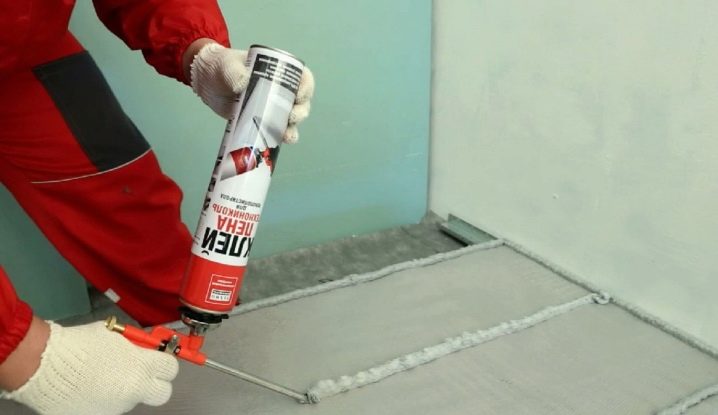
- Fastening the insulation. Ideally, polystyrene or mineral boards should be covered with plastic mesh for interior decoration. This will protect against cracks and the appearance of irregularities in the future. The glue is applied to the mesh in layers, each layer dries to hardness in 6-12 hours.

- Leveling the surface. Putty is needed here again. You can level the surface up to 2-3 layers. Then you need to let it dry for the time indicated in the instructions on the container, and process it with fine-grained sandpaper. The grain number on the sandpaper package is at least 100.
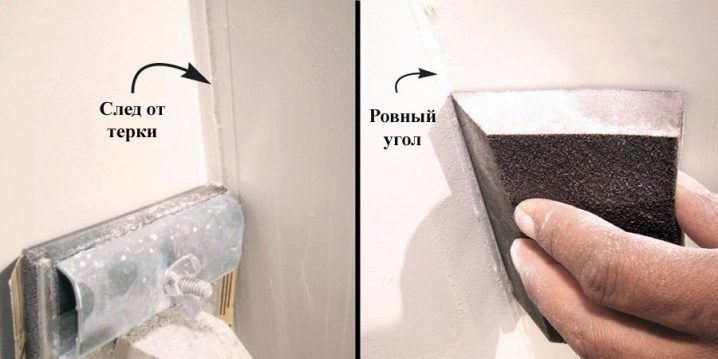
- Final finishing. Includes the application of a colorless primer followed by painting or any other method of decoration.
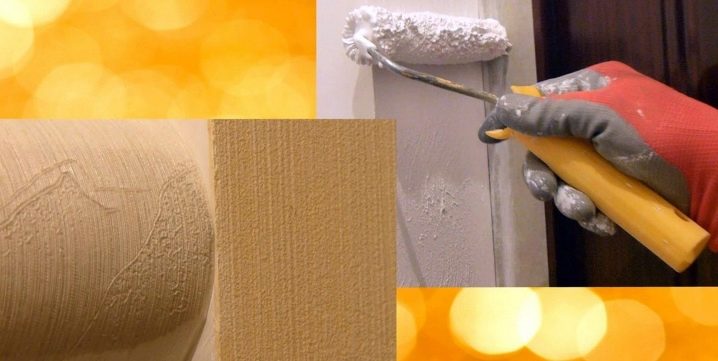
It is important to take into account that finishing materials have not only their own characteristics that affect thermal insulation, but also their weight. It is necessary to calculate in advance whether the insulated slope will withstand, for example, the weight of porcelain stoneware or lining, or if you should give preference to paint, plastic, wallpaper.
How to make a slope on the front door from MDF panels with your own hands, see the next video.
Colors
Slopes are an insignificant detail that can both support the style in the interior and completely break out of it. An inappropriate color of the finish will become an element that violates the integrity of the overall picture, therefore it is important to choose the right color in accordance with the design of the door and the decoration of the walls, floor and ceiling in the room.
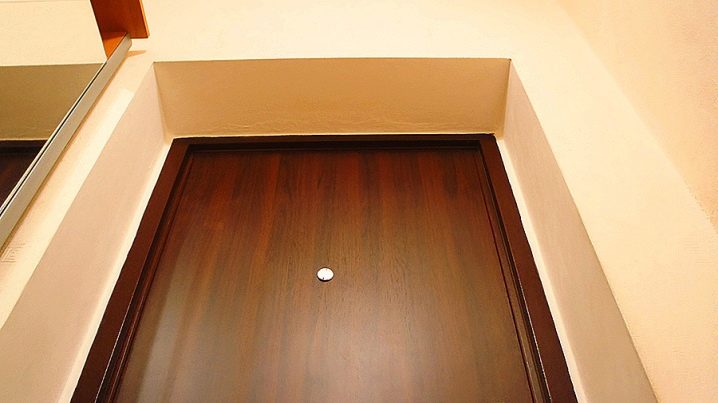
The color of the slopes directly depends on the selected material:
- The tree and its derivatives. This group includes all materials in the production of which wood was used in one way or another. These are classic solid wood add-ons, lining, and all boards pressed from shavings and adhesives, and veneer and laminate. Accordingly, the color palette is varied, but does not go beyond natural colors: pine, spruce, poplar, ash, bleached oak, stained oak, pink oak, light walnut, medium walnut, dark walnut, red maple, mahogany, antique pine, Douglas ... Gorgeous colors are collected in a dark palette of natural and synthetic origin: cherry, mahogany, wenge, chocolate, teak, indiana, macassar, locarno apple tree.
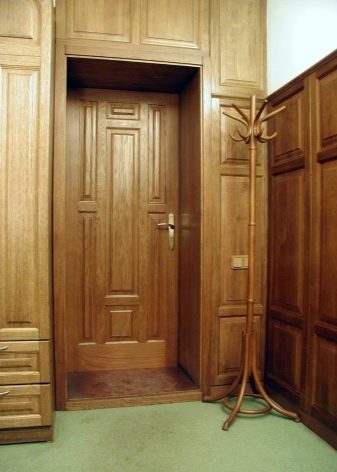

- Ceramics and stone. The technology for creating these materials allows the use of powder dyes of absolutely any shade. As a result, you can choose ceramics in the color of red brick, granite, goldolite, slate, natural stone. Brighter colors are also available, both natural and not found in their pure form: shades of green, yellow, red, blue, brown, monochrome palette (black, white, gray), and combined options. The combination is a combination of several colors, often imitating expensive stones: jasper, marble, malachite and others.
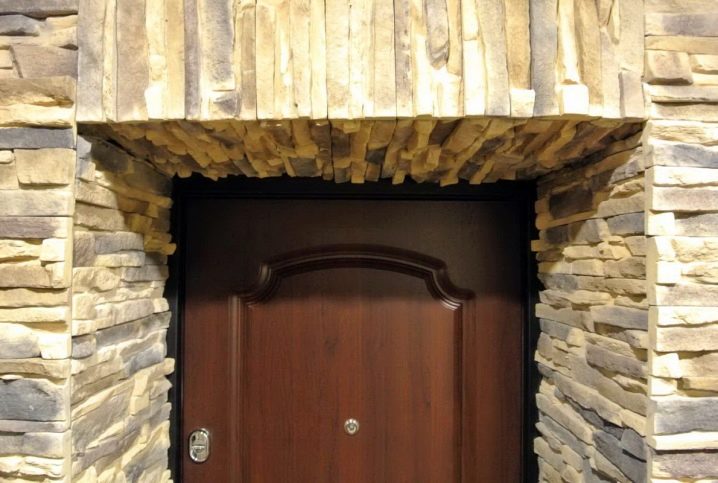
- Plastic. Like ceramics, it is available in all colors of the rainbow. In this case, the color can be monotonous, or it can be in the form of a picture. Imitation of other materials is popular, for example, drawing a pattern under a tree, brick.

- Siding. It is diverse due to different materials of manufacture. Copper and aluminum will have metallic shades, vinyl - all colors available to plastic, wood is presented in natural colors.

- Dye. Available in any color from classic white to vibrant fuchsia. Moreover, among the coloring compositions you can find "liquid" gold, silver, bronze.
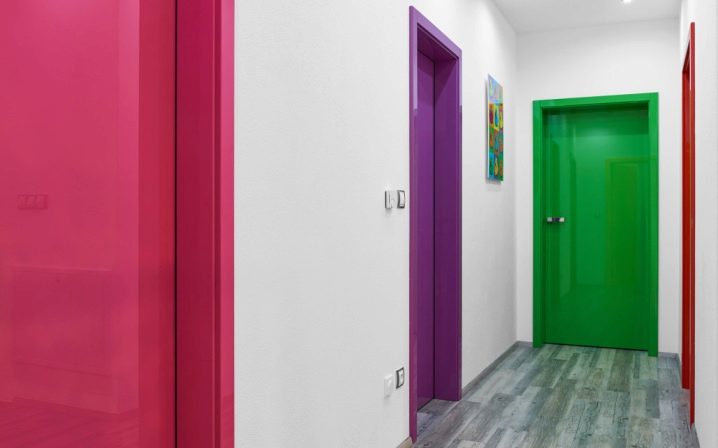
How to choose the right design?
The design should correspond to the style of the interior, especially the part of the room where the front door is located. Few can boast of the design of an apartment, where everything is kept within the framework of the popular style, but even the interior without pretensions, selected by the household themselves, should be harmonious.
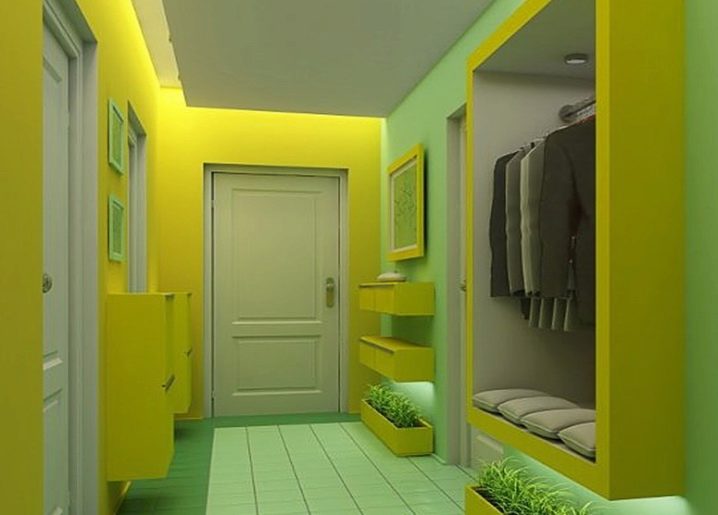
When choosing a finish for slopes, one should start from the colors, materials and textures prevailing in the room.So, to maintain a plastic door, you should use siding and sandwich panels, for a wooden one - veneer, extrusions and laminate, and you can decorate a metal (steel, iron, aluminum) door using paint, artificial stone or plastic with imitation of brick.
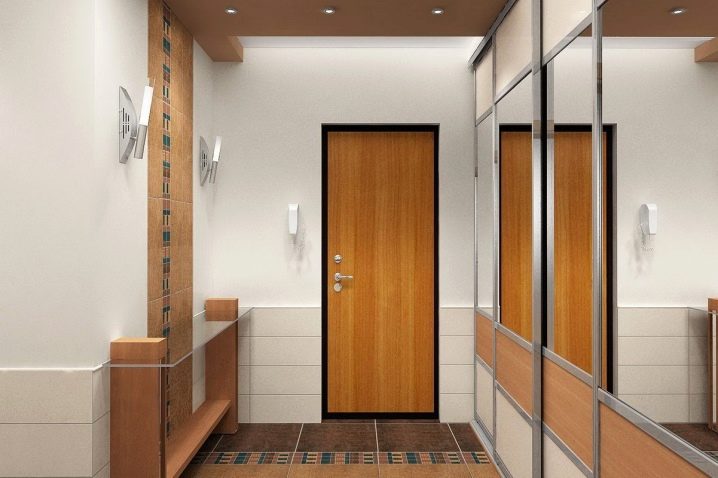
Beautiful design options
The decoration of slopes in a typical apartment, in a panel house or in a private house has the right to be original. It is difficult to make slopes of small width non-trivial. Classic addons are best suited for them. Even so, there are several design tricks that can add variety.

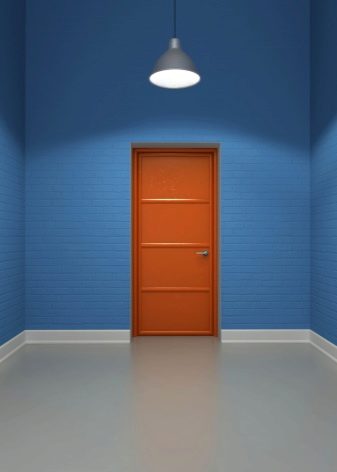
First of all, this is the use of add-ons to match the color of the door, which makes the structure integral. In the second case, a game of contrasts is used, when the finish of the add-ons is fundamentally different from the interior finish of the door shield. This technique looks perfect using contrasting light and dark tones.
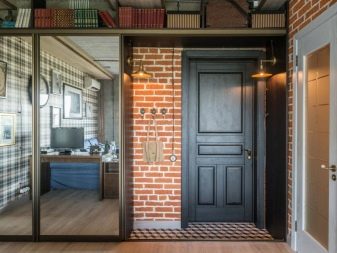

A rarely used, but interesting technique is to refine the slopes with mirror and reflective materials in the form of a mosaic. This visually "stretches" the doorway in height and width. You can focus on the slopes and the opening with the help of stone or textured plaster. But the most popular type of decoration is the stylization of the archway opening with the extension of the pattern beyond the edges of the slope.
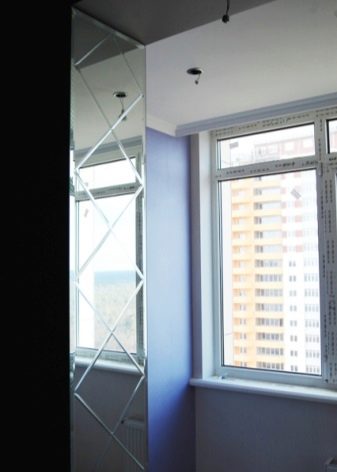














The comment was sent successfully.